Text and Photos by Henrylito D. Tacio
The picturesque Hanoi is dubbed “the Paris of the East.” With its tree-fringed boulevards, more than two dozen lakes, and thousands of French colonial-era buildings, Hanoi is a haven for tourists. At one time, TripAdvisor listed Hanoi as one of the world’s top ten best destinations.
The country’s capital, it is considered the second-largest city with a population of about 7 million people. Ho Chi Minh City, formerly known as Saigon, is the largest city with more than 10 million people.
Hanoi means “river within or inside.” But in the past, it was called Long Biên, then Tống Bình (meaning “song peace”) and Long Đỗ (“dragonbelly”). Later, it was given the name Đại La (“big net”) and Đông Kinh (“eastern capital”).
We left Manila at the wee hours when most people were already going to bed. We arrived at the Noi Bai International Airport when people were still snoring in bed. But it was good we had dinner two hours before we landed. The travel time from Manila to Hanoi was about three hours; Manila is one hour ahead of Hanoi.
The hot weather in Manila came to mind when we were welcome with the cold weather. Hanoi has a distinct winter and summer season. The cool but mostly dry winter lasts from November to April when temperatures average 17-22⁰C, with the coldest months being January to March. It was good that I brought a winter jacket and pants that I used when I visited the United States some years back.
After checking-in at the historic Sofitel Legend Metropole, we immediately rushed to our bed. It was still 3 in the morning, and we had to take our breakfast at 8 am because our first-day tour would commence by 11 am.
Despite being sleepy, all of us were ready for our by 11 am. Our first stopover was the Hoa Lo Prison. It is commonly translated as “fiery furnace” or “stove.” The French called it Maison Centrale — literally, Central House, a traditional euphemism to denote prisons in France.
Only a small portion of the vast prison complex that was built by the French in 1896 remains; most exhibits are related to the prison’s use up to the mid-1950s. You get to learn how the Vietnamese tried to get independence from France. There is also that ominous French guillotine used to behead Vietnamese revolutionaries.
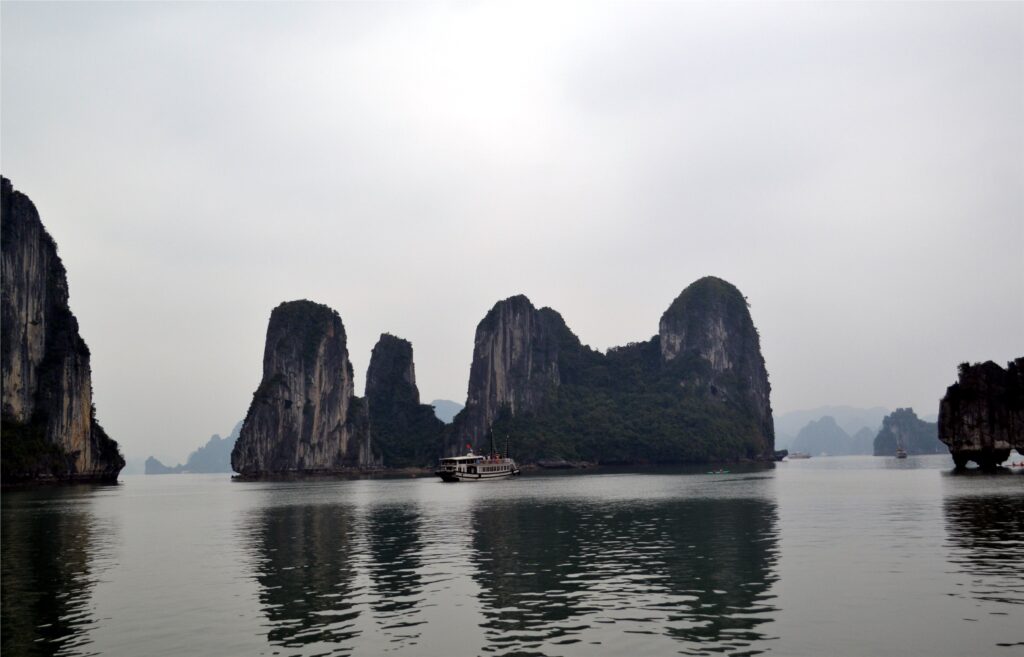
But most Filipinos remember it as the prison cell of American pilots who were captured during the war. The prisoner of wars called it “Hanoi Hilton.” Among the famous inmates were Pete Peterson (the first US ambassador to a unified Vietnam in 1995) and Senator John McCain (the Republican nominee for the US presidency in 2008).
From there, we went straight to Hoan Kiem Lake, the historical and cultural center of Hanoi. This charming lake has a small island on which the Turtle Pagoda stands. It marks the spot where, according to legend, a turtle rose from the water-bearing a magic sword with which Le Loi, a 15th-century Vietnamese hero, drove out the Chinese invaders. This must be the reason why it is also called Sword Lake.
A popular spot for visitors at the Hoan Kiem Lake is the Ngoc Son Temple, which means “Temple of the Jade Mountain.” It is connected to the lakeshore by an elegant scarlet bridge built in classical Vietnamese style. Buildings of the temple include the Pen Tower (Thap But), the ink-slab (Dai Nghien), the Moon Contemplation Pavilion (Dac Nguyet), and the Pavilion against Waves (Din Tran Ba).
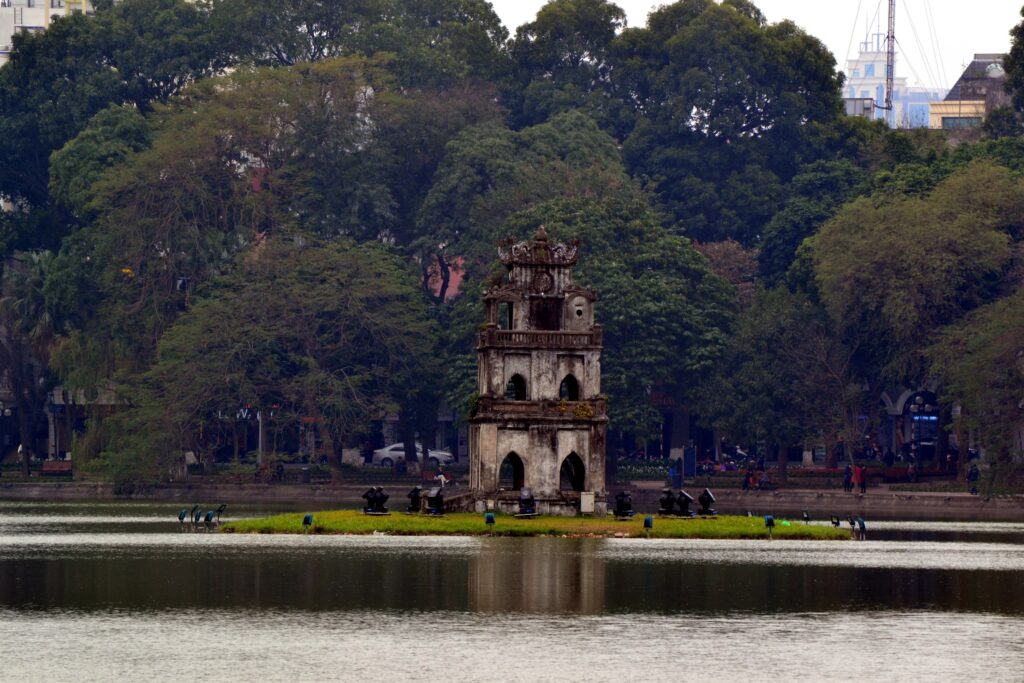
Turtle pagoda 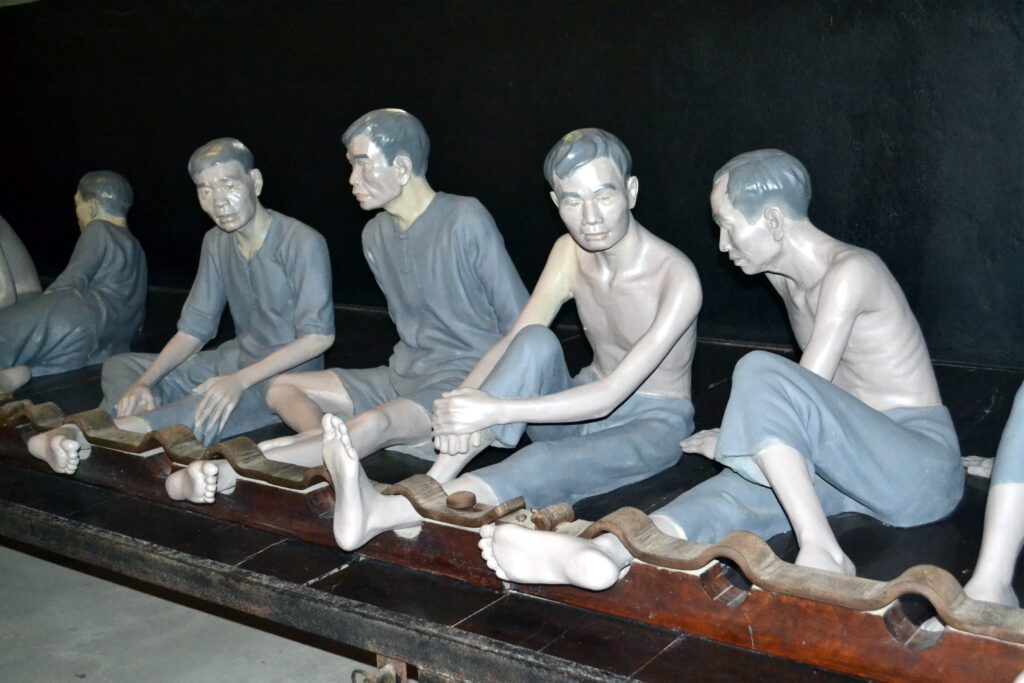
Inside Hoa Lo Prison
From the lake, we walked to the cinema where we watched the water puppet show. It is a tradition that dates back as far as the 11th century. The modern version uses puppets made out of wood and then lacquered. The shows are performed in a waist-deep pool. A large bamboo rod supports the puppet under the water and is used by the puppeteers, who are normally hidden behind a screen, to control them. Thus the puppets appear to be moving over the water.
The water puppet show lasted for almost an hour. When we went out of the theater, we were treated to a cyclo tour and explored the Old Quarter of Hanoi. During the French colonial period, rickshaws were introduced, but it was rejected. So cyclo, a three-wheel bicycle taxi, came into existence.
Now a little bit of history about the Old Quarter. In the late 19th century, the French occupied Hanoi. They demolished many of the old Vietnamese buildings and replaced them with imposing French-style villas. Today, the area is home to some of Hanoi’s fanciest restaurants and hotels.
On our second day, we visited the Ba Đình Square, where President Ho Chi Minh read the Proclamation of Independence of the Democratic Republic of Vietnam on September 2, 1945. When the president died, the granite Ho Chi Minh Mausoleum was built to display his embalmed body. It remains a major site of tourism and pilgrimage.
Not far from the square is the Presidential Palace, which was constructed by Auguste Henri Vildieu, the official French architect for French Indochina. When Vietnam achieved independence in 1954, Ho Chi Minh refused to live in the grand structure for symbolic reasons. Eventually, he built a traditional Vietnamese stilt house and carp pond on the grounds. He lived in the said house until his death in 1969.
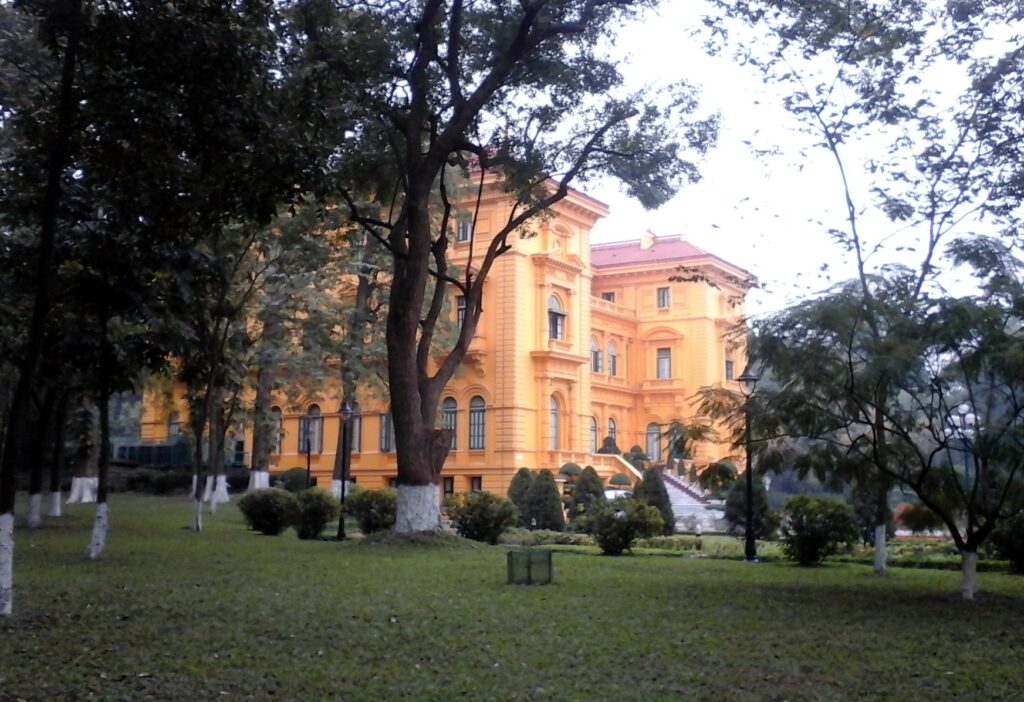
Presidential Palace 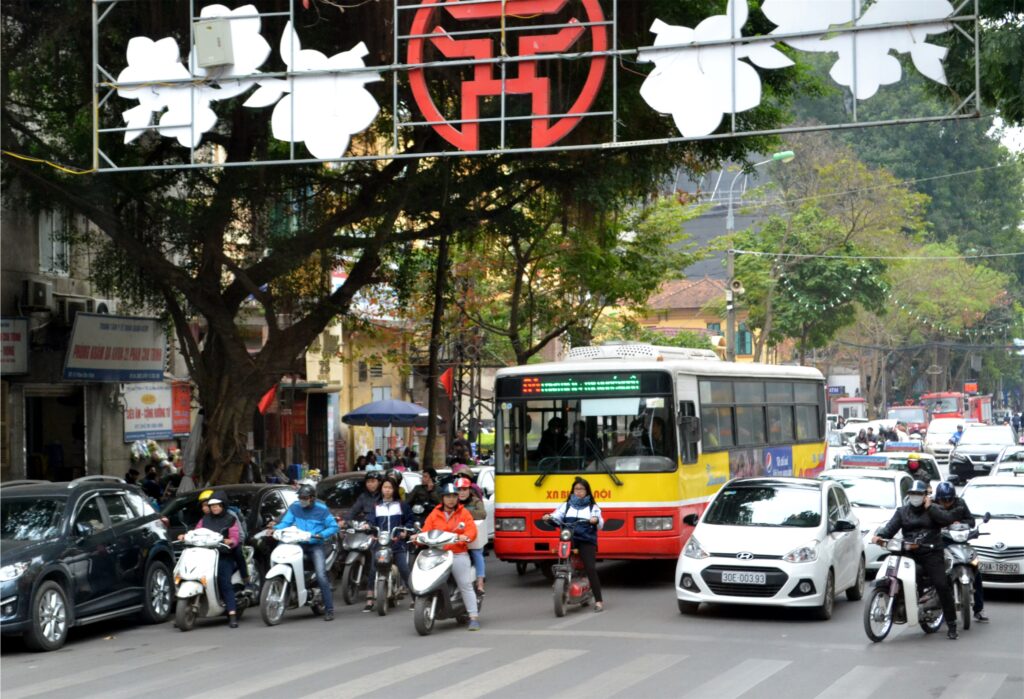
Old Quarter 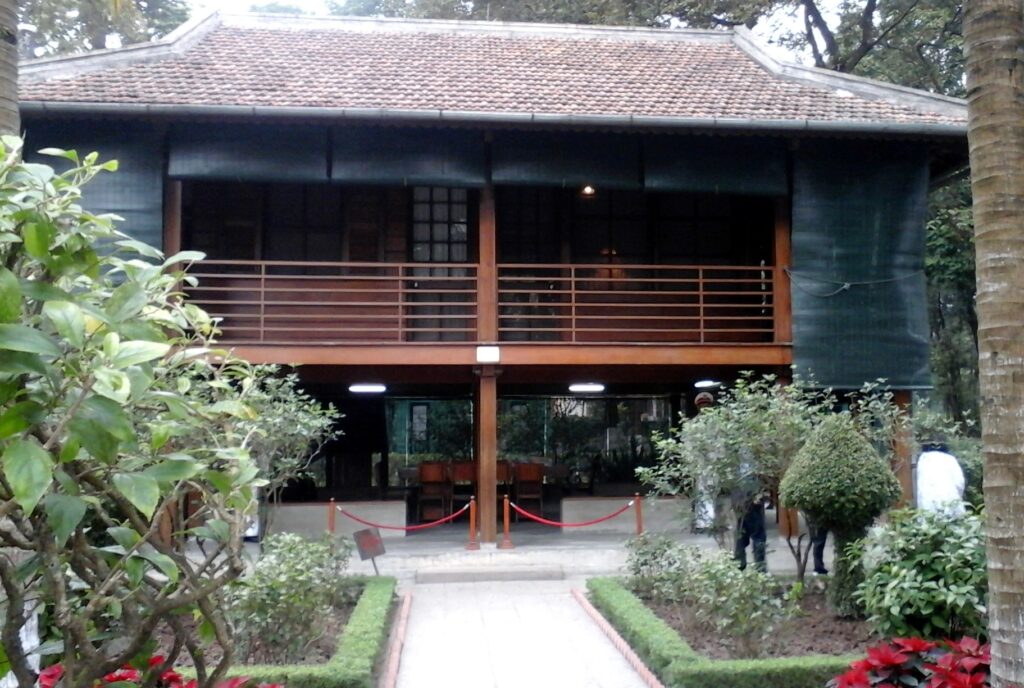
Ho Chi Minh house-on-stilts
While the Palace remains strictly off-limits to visitors, the expansive garden and pond at the rear of the Palace are wide open. A 300-foot path called “Mango Alley” leads from the visitors’ entrance, around a carp pond, to the stilt house claimed to have housed Ho Chi Minh from 1958 to his death in 1969.
The Chua Mot Cot (or One-Pillar Pagoda) is not far from the stilt house. It is said that many Vietnamese believe the pagoda looks like Buddha sitting on a lotus flower. It was first built in the 11th century to honor Buddhist advisers who supported Ly Thai To, the founder of ancient Hanoi.
We capped the day’s tour with a visit to the Fine Arts Museum, located near Van Mieu or “Temple of Literature.” A temple of Confucius, it hosts the “Imperial Academy,” Vietnam’s first national university. Built-in 1070, it is one of several temples in Vietnam which is dedicated to Confucius, sages, and scholars. It is said that many of the country’s scholars took their examinations here, and their achievements are recorded on the stone stele.
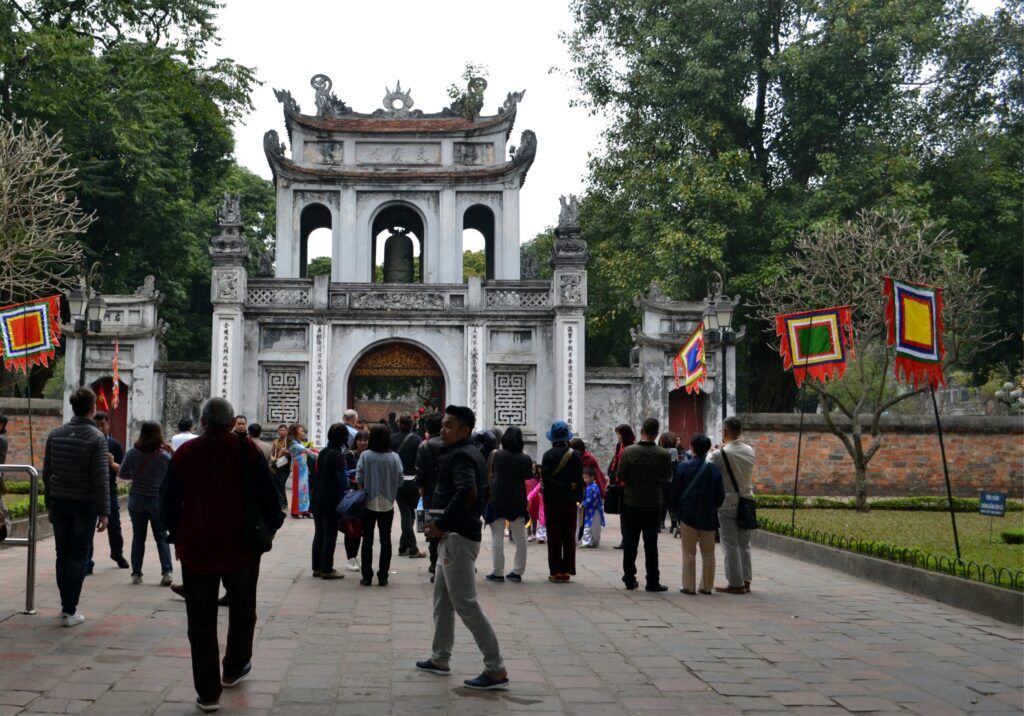
Temple of Literature 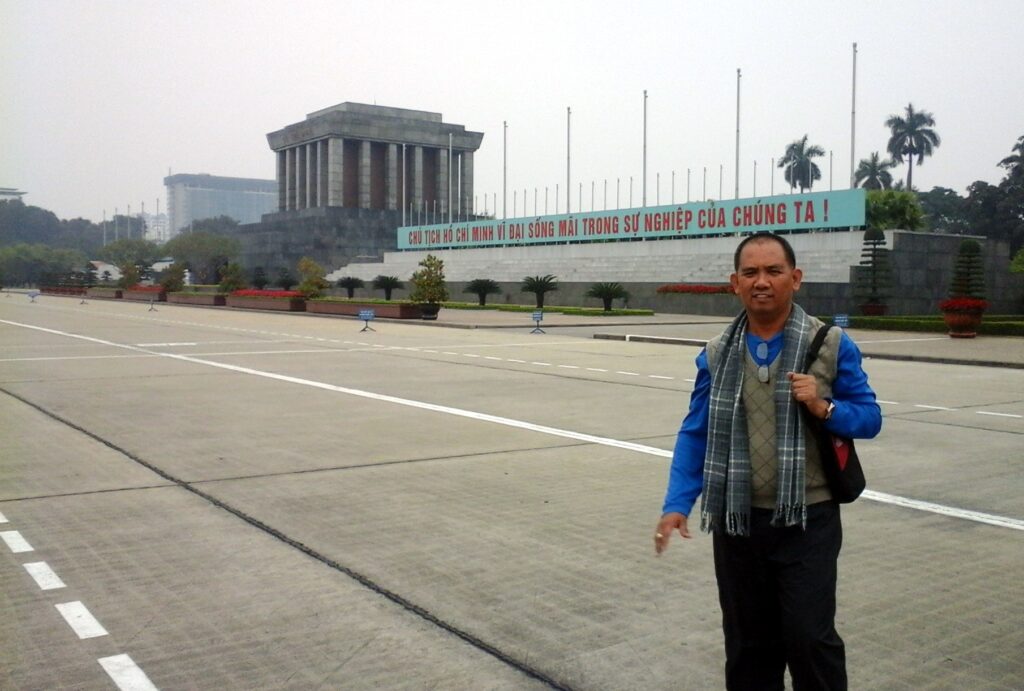
The author at Ba Dinh Square
Our last day was spent in Ha Long Bay, about 164 kilometers east of Hanoi. It was approximately four hours’ drive via the Red River Delta. We made a stopover at Hai Duong Town to take a short break.
Hạ Long Bay has an area of around 1,553 square kilometers, including 1,960–2,000 islets, most of which are limestone. The limestone in this bay has gone through 500 million years of formation in different conditions and environments. The evolution of the karst has reportedly taken 20 million years under the impact of the tropical wet climate.
In 2000, the World Heritage Committee of the United Nations Educational, Scientific and Cultural Organization (UNESCO) had inscribed the Hạ Long Bay in its heritage list “according to its outstanding examples representing major stages of the Earth’s history and its original limestone karstic geomorphologic features.”

